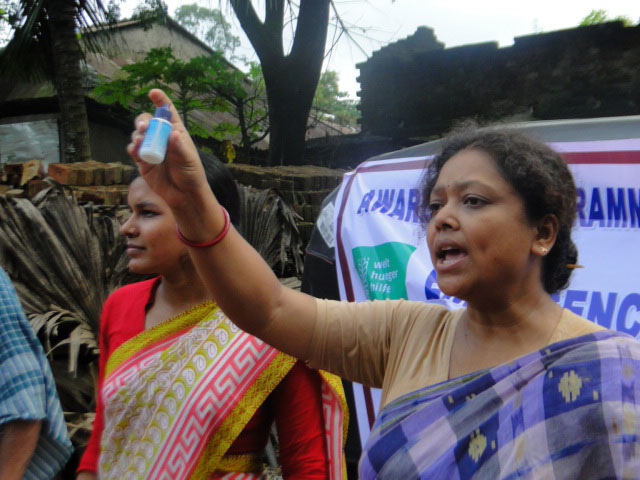
Joynagar II, situated in the Sundarbans Gangetic Delta region, was one of the worst affected by the cyclone Komen, that hit India, Bangladesh and Myanmar in July. Welthungerhilfe has been working in the area for the past 25 years and was able to start relief operations immediately, together with our partner Sri Ramkrishna Ashram Nimpit (SRAN).
“The men in the villages had to migrate to find work, because the construction labour they used to do under the government schemes is not possible now, after the floods. Women and children are left behind hungry. There is little food, and it is very expensive. This year, the hunger period will stretch until March, instead of ending as usual in October”, shares our colleague Sweta, who visited the flood-affected areas in West Bengal last week.
The floods caused by the cyclone inundated the crop land and destroyed the vegetable farms along the borders of the paddy field, together with paddy seedlings. The flooding caused a major crisis of fodder and cattle feed, making the animals – already suffering from infections and diarrhoea – even weaker.
Drinking water sources have been inundated and the community depends on very few tube wells that are on higher areas – women need to walk through floodwaters carrying the pitchers on their head, as the poor water outlet caused the water to stagnate in agriculture fields and residential areas. 25% of households are still submerged in water and the mud walls are gradually collapsing. The community is using plastic sheets to protect themselves from the monsoon, which will continue until the end of October.
“Malnutrition” continues Sweta “has increased, and most children are malnourished and suffer from skin diseases, cough, cold or chest congestion”.
Thanks to the support from Welthungerhilfe, our partner SRAN was able to reach out to the affected community immediately, identify the people in most need, and plan the priority interventions. So far, the focus has been on setting up health camps, medical camps for animals, awareness camps for women on hygiene and diarrhoea management, distribution of food supplements to malnourished children, and distribution of tarpaulins.
By the end of August:
• 10 health camps were set up and nearly 2500 patients treated
• 900 hygiene packets were distributed through 10 WASH awareness camps. ORS packets have been provided to the local health worker from the ICDS, who will distribute them as and when required
• 1300 packets of nutri-mix were distributed (200 mothers + 1100 SAM and MAM children) in 10 villages




